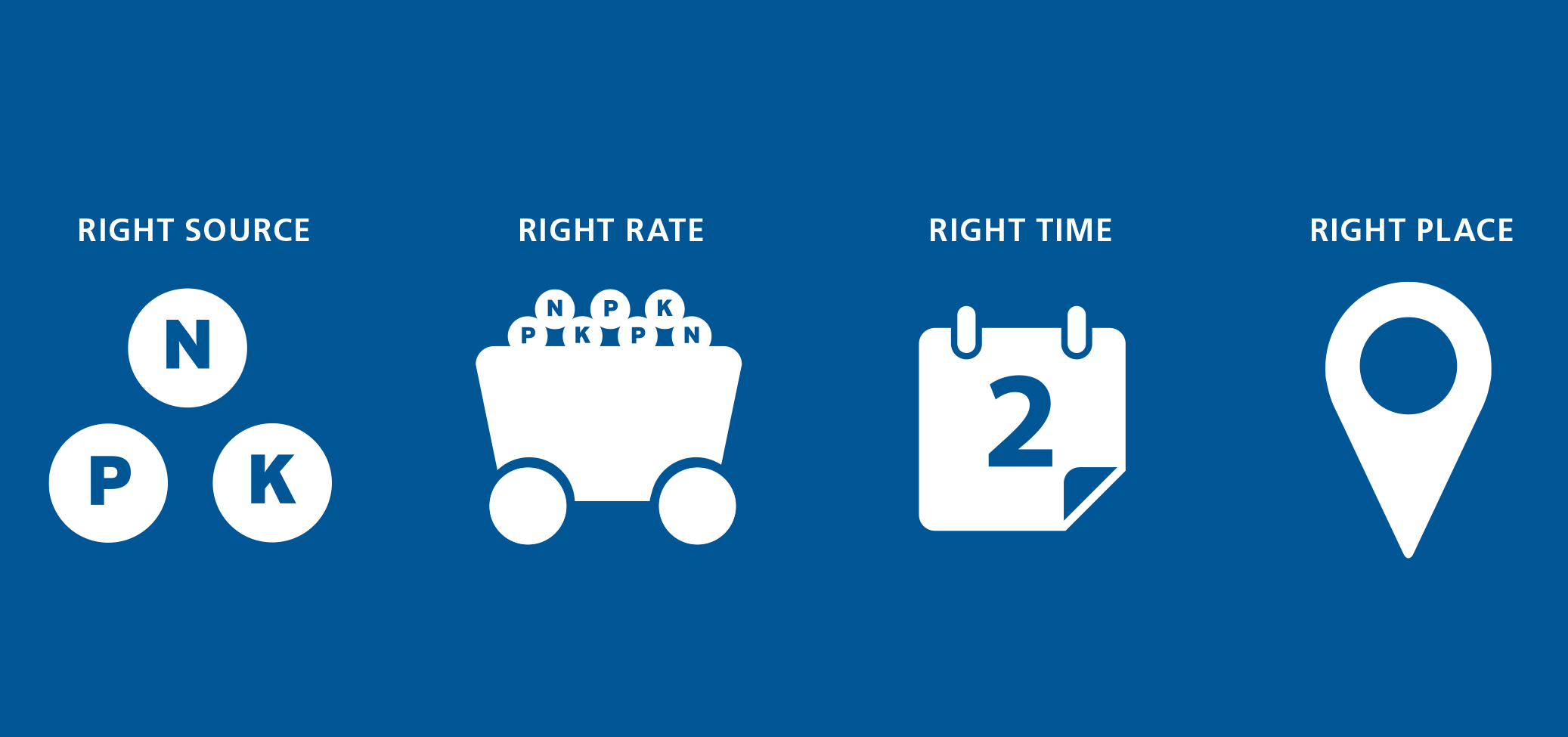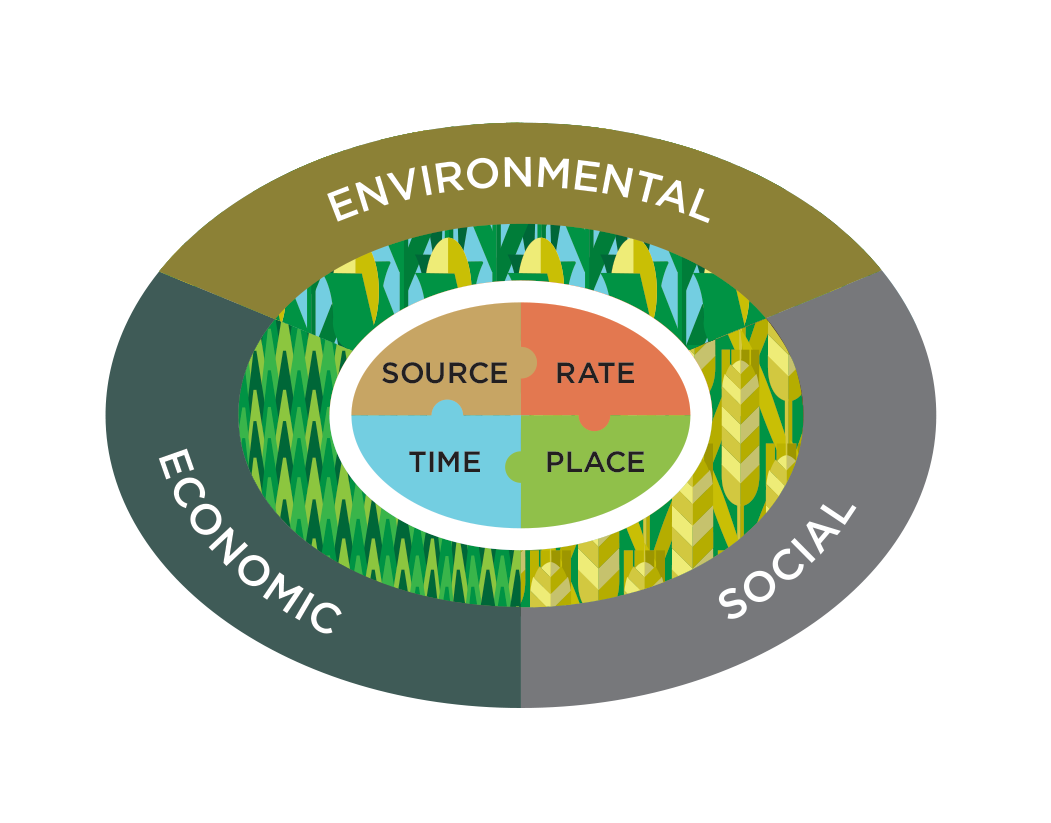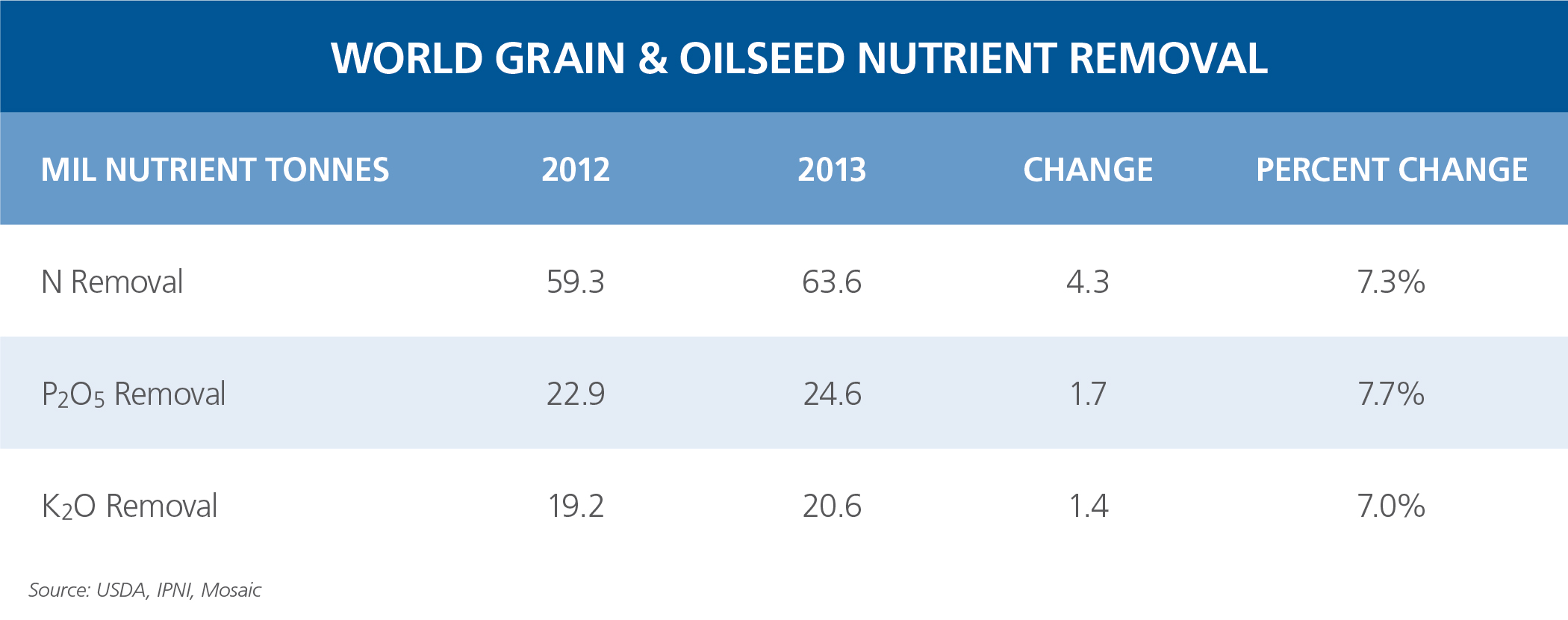The Mosaic Company is committed to helping reduce the amount of agricultural phosphate nutrients in the water, while balancing the essential need for phosphorus fertilizer in crop production. When properly managed, fertilizer provides economic, environmental and social benefits. Mosaic also supports retailers’ and growers’ efforts to apply 4R Nutrient Stewardship through science-based and field-specific fertilizer use and partners with industry associations, conservation groups and environmentally focused organizations whose work supports increased soil health, improved nutrient stewardship and crop production innovation.

Unfenced worked with Tom Bruulsema, Ph.D., Northeast North America program director for the International Plant Nutrition Institute, and Curt Woolfolk, senior agronomist for The Mosaic Company, to create the following updates on nutrient stewardship initiatives among U.S. growers. Dr. Bruulsema plays a key role in advising retailers, growers and stakeholders throughout the industry on the implementation and value of 4R Nutrient Stewardship.
THE RIGHT PLACE TO PUT PHOSPHORUS
Phosphorus (P) is an essential nutrient for growing crops. Providing the nutrients necessary for high-yield cropping systems, while also preserving water quality, requires special attention to detail. The approach of choice for minimizing nutrient losses from fertilizer is 4R Nutrient Stewardship, which ensures the Right Source of P is applied at the Right Rate, at the Right Time and in the Right Place.

Right Source. Different fertilizer sources have different characteristics after application. Phosphorus sources that increase P uptake efficiency allow for more productive crops and less environmental impact.
Right Rate. Soil test values and crop nutrient removal data are helpful tools to determine nutrient applications for the upcoming crop year. Soil testing quantifies nutrients that are available in the soil, and may be used to identify high and low areas within the field. Soil tests generally involve taking samples from the top 6 to 7 inches, and should be conducted in several areas within each field. Because soil testing is so important in planning soil fertility management practices, it must be done accurately.
Know the pH levels of soil. The pH levels of your fields will impact nutrient availability and will therefore affect your overall soil fertility plan. Low soil pH can make it difficult for plants to access key nutrients like phosphorus, calcium, magnesium and molybdenum. It can also negatively affect nitrogen fixation. Meanwhile, high soil pH can reduce the availability of micronutrients like iron, manganese, copper and zinc. While it is difficult to lower a high pH level, knowing that pH levels are high will change your soil management approach and help reduce any risks associated with it. Low pH levels can be raised with lime applications. Corn, wheat and soybean crops prefer pH levels from 6.0 to 6.5, while alfalfa requires a slightly higher pH level, above 6.5.
Understand the importance of macronutrients. Nitrogen (N), phosphorus (P) and potassium (K) are known as the three primary macronutrients needed for plant life to develop healthily and continuously throughout the growing season. While some farmers feel that crop rotations may provide credits or minimize the need for macronutrients like N, it is important to conduct soil tests to make sure fields have adequate levels of N, P and K to get plants off to a strong start. Along with the three primary macronutrients, calcium, magnesium and sulfur are three secondary macronutrients critical to crop health.
Enlist the support of micronutrients. There are eight micronutrients essential for plant nutrition. Micronutrients including boron, zinc and magnesium are gaining greater attention and use as new seed varieties are introduced to the market. Including micronutrients in a soil fertility plan can increase crop production by several bushels per acre. When selecting a fertilizer source, look for products that combine both macronutrients and micronutrients to obtain higher yield potential. One important note to consider regarding macro- and micronutrients: Even though scouting fields is the best way to determine the immediate health of plants, by the time a deficiency is observed in the field, yield potential has already been lost. Proactively applying the Right Source of nutrients at the Right Rate, at the Right Time and in the Right Place is critical in maximizing yield potential.
Right Time. It’s important to apply nutrients when the risk of runoff and leaching is low. Research shows that when P fertilizer is left on the soil surface, any rainfall-induced runoff within the next several weeks will contain much-elevated levels of soluble P. While such runoff wouldn’t carry away more than a small percentage of the phosphorus applied, P loss levels may contribute to various factors that create the potential for an algal bloom.
Pay close attention to late-fall and early-spring applications, when soil may still be frozen.
Right Place. The right place to put P is:
- Where the soil doesn’t have enough. Soil testing identifies where crops need it most.
- In zones of need within fields. This calls for mapping and managing spatial variability in soil properties and soil test levels.
- Close to the roots of the plants that need it. Phosphorus isn’t very mobile in the soil. Many crops, especially corn, have a special need for P early in the growing season. Seed-placed P fertilizer provides nutrients for early-season growth while also preventing runoff. Applying phosphorus fertilizer in bands below the soil surface reduces the risk of it moving to water by surface runoff.
- In a cropping system geared to higher yields. Adequate phosphorus gives a seedling greater potential, which can only be attained when everything else is managed to avoid limitations. High yields remove more P from the soil, and the removal must be replaced to maintain soil fertility.
There are wrong places to put P, too. To minimize impacts on water quality, growers need to avoid putting soluble forms of P on the surface of runoff-susceptible soils, especially during the critical periods: late fall and early spring in most areas.
What’s the right place for P? In the soil rooting zone — not on the soil surface. Facilitating the availability of the sources and equipment to get phosphorus fertilizer into the right place is an important contribution toward better crops … and better water.
ACHIEVE AND SUSTAIN HIGH-YIELD RESULTS THROUGH BALANCED CROP NUTRITION
Each year, farmers debate what inputs they can reduce or remove while maintaining healthy profit margins. If fertilizer is one of those inputs in question, think of the long-term effects using less of it may have on soil fertility and future yields.
In the absence of nutrients, plants become more susceptible to pests and disease, which lowers yield potential. Additionally, if farmers are choosing high-yield varieties, soil fertility is critical. If macronutrients are at minimum levels, the crop is already at a disadvantage. Be sure to plant high-yield varieties in the fields with the highest soil fertility; this provides a balance of nutrients for plants that will aggressively be taking them from the soil.
Balanced nutrition for plants is an ongoing responsibility. In fact, balanced crop nutrition is responsible for as much as 60 percent of yield. And it’s something that is built over time. A good nutrient management plan will not only address nutrient deficiencies for the coming year, but it also helps increase macronutrients to the right levels — in situations of low soil test value — over a period of several years, in accordance with 4R Nutrient Stewardship. Micronutrient needs, both short- and long-term, should be considered as well.
Although low commodity prices create an instinctive “tightening of the belt,” farmers should account for this year’s nutrient removal, soil-test, and then apply fertilizer accordingly. This will ensure profitable yields in 2015 and beyond. A committed, consistent investment in crop nutrition is one of the most sustainable business decisions a farmer can make.
RECORD HARVESTS, RECORD NUTRIENT REMOVAL: A MARKET PERSPECTIVE ON THE P-CYCLE
Record harvests are removing record amounts of nutrients from farm fields. The step-up in global grain and oilseed production has drained large amounts of phosphorus and potassium from soils during the last two growing seasons. Based on IPNI estimates of nutrient removal by crop, it is estimated that the major grain and oilseed crops pulled an additional 7.7 percent, or 1.77 million tonnes, of phosphate (P₂O₅) from farm fields in 2013 compared to 2012. In the case of potash, grain and oilseed crops removed an additional 7.0 percent, or 1.35 million tonnes, of potash (K2O) in 2013 vs. 2012. That translates into about 3.8 million tonnes of DAP and 2.3 million tonnes of MOP.

Record withdrawals coupled with the widespread use of precision application technologies suggest that soils likely will not test at high P and K levels following the 2014 harvest. The speculation that there are adequate amounts of P and K in soils to feed the 2015 crop just doesn’t square with recent statistics or, in the case of phosphate, soil chemistry. The notion that farmers build up phosphorus and potassium levels during good times and then draw them down during the tough times is not consistent with the use of today’s precision application technologies and sound nutrient stewardship.
The debate that phosphorus, if not used by the plant, will carry over from one year to the next year is way too simplistic. The soil chemistry of phosphorus is the most complex of the three major nutrients, and the amount of available P is determined by what agronomists describe as a P cycle that takes place in the soil solution.
Plants absorb phosphorus through their roots in the form of orthophosphate ions. Water-soluble P from plant nutrient products initially breaks down into orthophosphate ions in the soil solution and is readily available to plants.
However, orthophosphate ions are highly social creatures. While they may not move far in the soil, these ions bond quickly with other minerals such as aluminum, calcium and iron, or with organic matter, to form compounds that are less soluble and less available to a plant. The chemical and physical characteristics of soil such as its pH, organic matter, moisture, temperature and compaction determine how much, how quickly and how tightly phosphorus will bond with other elements and become unavailable to a plant. These bonds, fortunately, do not last forever, and the compounds eventually release P back into the soil solution as a result of other chemical reactions over time. This cycling of phosphorus from readily available to less available to unavailable and back occurs over several years.
Most farmers build available P to target levels in their soils and then replace the amount removed by the crop each year in order to keep the cycle intact. However, most of it will not be from last year’s carryover, but rather from applications during several previous years. Reducing or skipping phosphorus application for a year breaks this cycle and will reduce the amount of available P in future years. As a result, larger applications are required in the following years in order to supply the amount of available phosphorus needed by a crop.